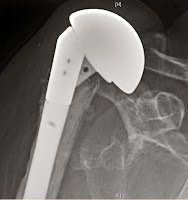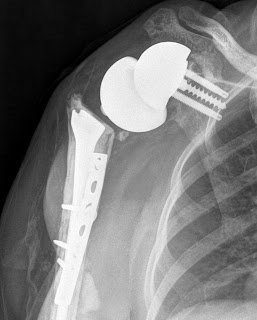Fuente
Este artículo es originalmente publicado en:
http://www.ncbi.nlm.nih.gov/pubmed/25901627
http://www.healio.com/orthopedics/journals/ortho/2015-4-38-4/%7Bc905d521-004a-4066-a11d-3efdc3ac6527%7D/minimally-invasive-reconstruction-of-acute-type-iv-and-type-v-acromioclavicular-separations#?ecp=318F9B42-3E81-E311-ADF0-A4BADB296AA8
De:
Katsenis DL, Stamoulis D, Begkas D, Tsamados S.
Orthopedics. 2015 Apr 1;38(4):e324-30. doi: 10.3928/01477447-20150402-62.
Todos los derechos reservados para:
Copyright 2015, SLACK Incorporated.
Abstract
The goal of this study was to evaluate the midterm radiologic, clinical, and functional results of the early reconstruction of the severe acromioclavicular joint dislocation using the flipptack fixation button technique. Between December 2006 and December 2009, one hundred thirty-five consecutive patients with acromioclavicular joint separations were admitted to the authors' institution. Fifty patients were included in the study. According to Rockwood classification, 29 (58%) dislocations were type IV and 21 (42%) were type V. Surgery was performed at an average of 4.2 days (range, 0-12 days) after dislocation. All dislocations were treated with the flipptack fixation button technique. All patients were evaluated at a final postoperative follow-up of 42 months (range, 36-49 months). The clinical outcome was assessed using the Constant score. The functional limitation was assessed using the bother index of the short Musculoskeletal Function Assessment. Radiographs taken immediately postoperatively and at the final follow-up assessed acromioclavicular joint reduction, coracoclavicular distance, and joint arthrosis. At the final follow-up, mean Constant score was 93.04 (range, 84-100). The average (±SD) short Musculoskeletal Function Assessment bother index was 20.88±8.95 (range, 2.0-49). No statistically significant difference was found between the acromioclavicular joint dislocation type and the clinical result (P=.227; chi-square, 6.910, Kruskal Wallis test). The regression of the coracoclavicular distance at final follow-up was not statistically significant (P=.276; chi-square, 6.319, Kruskal Wallis test). The flipptack fixation button technique is an effective alternative for the treatment of severe acromioclavicular joint dislocation. Because all objectives of the treatment were obtained, the results do not deteriorate over time. [Orthopedics. 2015; 38(4):e324-e330.].
Resumen
El objetivo de este estudio fue evaluar los resultados radiológicos de mitad de período, clínicos y funcionales de la temprana reconstrucción de la severa luxación acromioclavicular de la articulación mediante la técnica botón de fijación flipptack. Entre diciembre de 2006 y diciembre de 2009, ciento Treinta y cinco pacientes consecutivos con separaciones conjuntas acromioclaviculares fueron admitidos en la institución de los autores. Cincuenta pacientes se incluyeron en el estudio. Según la clasificación Rockwood, 29 (58%) fueron dislocaciones de tipo IV y 21 (42%) fueron de tipo V. La cirugía se realizó en un promedio de 4,2 días (rango, 0-12 días) después de la dislocación. Todas las dislocaciones fueron tratados con la técnica botón de fijación flipptack. Todos los pacientes fueron evaluados en una final de seguimiento postoperatorio de 42 meses (rango, 36-49 meses). La evolución clínica se evaluó mediante la puntuación de Constant. La limitación funcional se evaluó mediante el índice de molestia de corto Evaluación función musculoesquelética. Las radiografías tomadas inmediatamente después de la operación y al final del seguimiento evaluado acromioclavicular reducción conjunta, distancia coracoclavicular y artrosis articular. Al final del seguimiento, la puntuación media constante era 93,04 (rango, 84-100). La media (± DE) de corto Evaluación Función musculoesqueléticos molesta índice fue de 20,88 ± 8,95 (rango, 2,0-49). No se encontraron diferencias estadísticamente significativas entre el tipo de luxación de la articulación acromioclavicular y el resultado clínico (p = 0,227; chi-cuadrado, 6.910, Kruskal Wallis test). La regresión de la distancia coracoclavicular al final del seguimiento no fue estadísticamente significativa (p = 0,276; chi-cuadrado, 6.319, Kruskal Wallis test). La técnica botón de fijación flipptack es una alternativa eficaz para el tratamiento de la luxación de la articulación acromioclavicular severa. Debido a que se obtuvieron todos los objetivos del tratamiento, los resultados no se deterioran con el tiempo
Copyright 2015, SLACK Incorporated.
- PMID:
- 25901627
- [PubMed - in process]
































